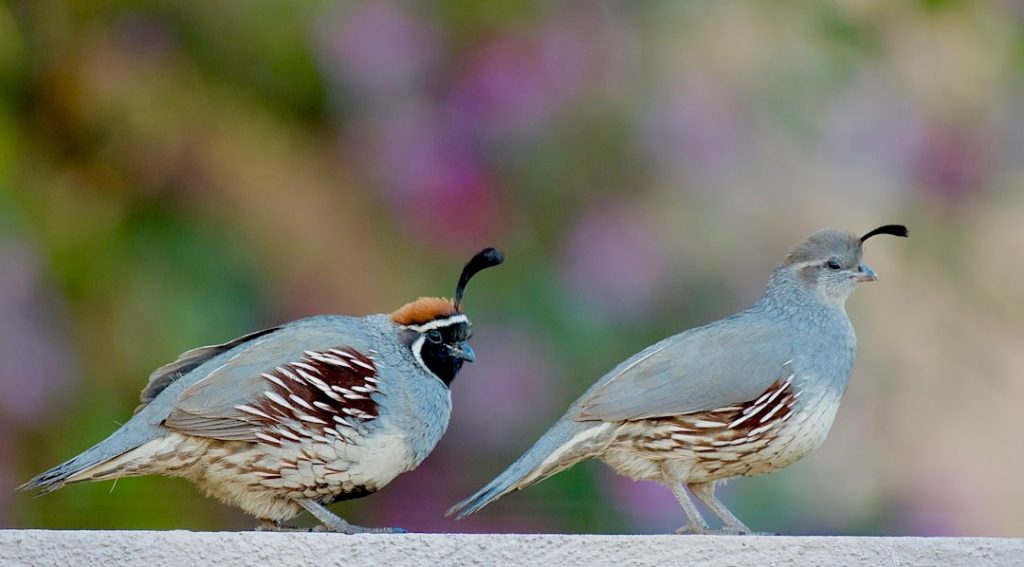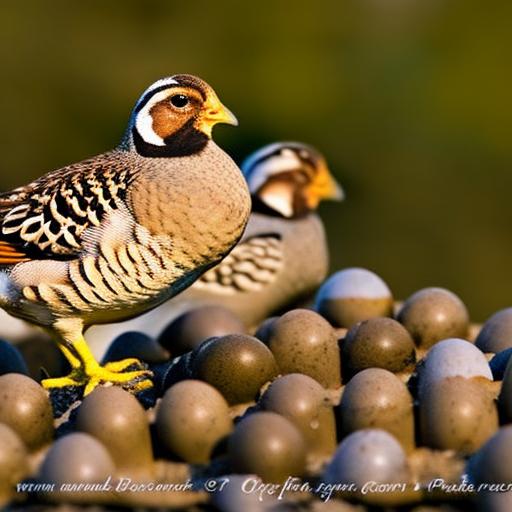Quail breeding has become increasingly popular among homesteaders and small-scale farmers due to the low maintenance and space requirements of these birds. Quails are known for their fast growth, high egg production, and delicious meat, making them a valuable addition to any small farm or backyard operation. Breeding quails can be a rewarding and profitable venture, but it requires careful planning and attention to detail to ensure the health and well-being of the birds. In this article, we will explore the essential aspects of quail breeding, including selecting the right breeding cage, building a suitable housing structure, feeding and watering systems, temperature and lighting requirements, as well as maintenance and cleaning tips.
Table of Contents
Key Takeaways
- Quail breeding can be a rewarding hobby or business venture
- The right breeding cage is essential for successful quail breeding
- Building a quail breeding cage can be done with simple materials
- Size and design of the cage are important for the well-being of the quail
- Proper feeding, watering, temperature, and lighting are crucial for successful quail breeding
Selecting the Right Breeding Cage
When it comes to breeding quails, selecting the right breeding cage is crucial for the success of your operation. The breeding cage should provide enough space for the birds to move around comfortably while also ensuring their safety and security. It’s essential to choose a cage that is easy to clean and maintain, as hygiene is paramount in preventing diseases and ensuring the health of the birds. Additionally, the cage should be well-ventilated to provide adequate airflow and prevent the buildup of ammonia from the birds’ droppings. Consider the material of the cage as well; wire cages are a popular choice for quail breeding due to their durability and ease of cleaning. When selecting a breeding cage, it’s important to consider the number of birds you plan to breed and the space available in your breeding facility. Overcrowding can lead to stress, aggression, and decreased egg production, so it’s crucial to provide enough space for each bird to thrive.
Building a Quail Breeding Cage
Building a quail breeding cage can be a cost-effective option for small-scale breeders who want to customize their housing structure to meet the specific needs of their quail operation. When building a breeding cage, it’s important to consider the materials used, the size of the cage, and the design features that will promote the health and well-being of the birds. The cage should be constructed with durable materials that can withstand the wear and tear of daily use, as well as regular cleaning and disinfection. Additionally, the design of the cage should allow for easy access to the birds for feeding, watering, and egg collection. Consider incorporating features such as removable trays for easy cleaning, adjustable dividers for separating birds, and secure latches to prevent escapes. It’s also important to provide adequate protection from predators by ensuring that the cage is securely enclosed with a roof and sturdy walls. Building a quail breeding cage allows you to create a customized housing solution that meets the specific needs of your quail breeding operation while ensuring the comfort and safety of your birds.
Size and Design Considerations
When designing a quail breeding cage, it’s important to consider the size and design features that will promote the health and productivity of the birds. The size of the cage will depend on the number of birds you plan to breed, as well as the space available in your breeding facility. It’s essential to provide enough space for each bird to move around comfortably and engage in natural behaviors such as dust bathing and foraging. A general rule of thumb is to provide at least 1 square foot of space per bird, but larger breeds may require more space to thrive. Additionally, consider the design features that will promote the well-being of the birds, such as perches for roosting, nesting boxes for egg-laying, and hiding spots for shy or injured birds. The design of the cage should also allow for easy access for feeding, watering, and cleaning, as well as providing adequate ventilation and protection from predators. By carefully considering the size and design features of your quail breeding cage, you can create a comfortable and productive environment for your birds.
Feeding and Watering Systems
Feeding and watering systems are essential components of a successful quail breeding operation. Quails have specific dietary requirements that must be met to ensure their health and productivity. When designing a feeding system for your breeding cage, consider using feeders that are easy to clean and refill, such as gravity-fed or automatic feeders. It’s important to provide a balanced diet that includes high-quality quail feed, as well as access to grit and oyster shell for calcium supplementation. Additionally, consider incorporating a feeding schedule that provides regular meals throughout the day to prevent competition and ensure that all birds have access to food. When it comes to watering systems, providing clean and fresh water is crucial for the health of the birds. Consider using nipple drinkers or water cups that are easy to clean and maintain, as well as providing multiple watering stations to prevent overcrowding and ensure access for all birds. It’s important to monitor the water quality regularly and clean the watering system to prevent contamination and disease transmission. By implementing effective feeding and watering systems, you can ensure that your quails receive the nutrition they need to thrive and produce high-quality eggs.
Temperature and Lighting Requirements

Quails have specific temperature and lighting requirements that must be met to ensure their health, comfort, and productivity. When designing a quail breeding cage, it’s important to provide adequate heating during colder months to prevent stress and maintain egg production. Consider using heat lamps or radiant heaters to provide supplemental warmth, especially for young chicks or during extreme weather conditions. It’s important to monitor the temperature regularly and make adjustments as needed to ensure that the birds are comfortable. Additionally, consider providing natural or artificial lighting to simulate daylight hours, which is essential for regulating the birds’ reproductive cycles and promoting egg production. Providing 14-16 hours of light per day can help stimulate egg-laying in quails, especially during the winter months when daylight hours are shorter. It’s important to provide a consistent lighting schedule and ensure that the lighting source is positioned to provide even coverage throughout the breeding cage. By meeting the temperature and lighting requirements of your quails, you can promote their overall health and productivity throughout the year.
Maintenance and Cleaning Tips
Maintaining a clean and hygienic breeding cage is essential for preventing diseases and ensuring the health of your quails. Regular cleaning and disinfection of the cage, feeders, waterers, and nesting boxes are crucial for preventing the buildup of bacteria and parasites that can harm the birds. It’s important to establish a regular cleaning schedule that includes removing soiled bedding, scrubbing surfaces with a disinfectant solution, and allowing adequate drying time before reintroducing the birds. Additionally, monitor the condition of the cage regularly for signs of wear or damage that may compromise its structural integrity or pose a safety risk for the birds. It’s important to make repairs as needed and replace any worn or damaged components to maintain a secure and comfortable environment for your quails. By implementing effective maintenance and cleaning practices, you can ensure that your quail breeding operation remains healthy, productive, and sustainable for years to come.
In conclusion, quail breeding can be a rewarding venture for homesteaders and small-scale farmers looking to produce high-quality eggs and meat in a low-maintenance and space-efficient manner. By carefully selecting the right breeding cage, building a suitable housing structure, providing adequate feeding and watering systems, meeting temperature and lighting requirements, as well as implementing effective maintenance and cleaning practices, you can create a comfortable and productive environment for your quails. With proper care and attention to detail, quail breeding can be a profitable addition to your small farm or backyard operation while providing you with delicious eggs and meat for your family or local market.
If you’re looking for quail breeding cage plans, you may also be interested in learning about creative interior ideas for chicken coops. Poultry Wizard offers a helpful article on chicken coop interior ideas that can inspire you to create a comfortable and functional space for your birds. Understanding how to optimize the interior of your coop can complement your efforts in designing efficient quail breeding cages.
FAQs
What are quail breeding cages?
Quail breeding cages are specially designed enclosures used for housing and breeding quail. These cages are typically equipped with features that provide a suitable environment for quail to lay eggs, incubate them, and rear their young.
What are the benefits of using quail breeding cages?
Quail breeding cages provide a controlled environment for breeding quail, which can help to increase the success rate of breeding and ensure the health and safety of the birds. They also make it easier to monitor and manage the breeding process.
What should be considered when planning quail breeding cages?
When planning quail breeding cages, factors such as cage size, ventilation, temperature control, nesting areas, and ease of cleaning should be taken into consideration. It is important to provide enough space for the quail to move around and engage in natural behaviors.
Are there specific plans for building quail breeding cages?
Yes, there are various plans available for building quail breeding cages. These plans typically include detailed instructions and measurements for constructing the cages, as well as recommendations for materials and tools needed.
Where can I find quail breeding cage plans?
Quail breeding cage plans can be found online, in books and publications about quail farming, and through agricultural extension services. There are also forums and communities dedicated to quail breeding where members may share their own plans and experiences.
Meet Walter, the feathered-friend fanatic of Florida! Nestled in the sunshine state, Walter struts through life with his feathered companions, clucking his way to happiness. With a coop that’s fancier than a five-star hotel, he’s the Don Juan of the chicken world. When he’s not teaching his hens to do the cha-cha, you’ll find him in a heated debate with his prized rooster, Sir Clucks-a-Lot. Walter’s poultry passion is no yolk; he’s the sunny-side-up guy you never knew you needed in your flock of friends!







